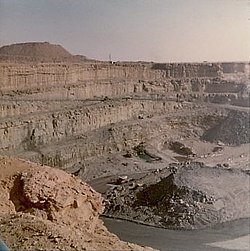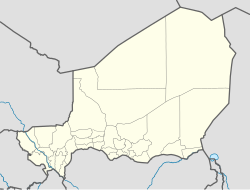 | |
| Location | |
|---|---|
| Agadez Region | |
| Country | Niger |
| Coordinates | 18°46′23.16″N7°20′39.48″E / 18.7731000°N 7.3443000°E |
| Production | |
| Products | uranium |
The Arlit mine is a large mine located near Arlit, in the northern part of Niger in Agadez Region. Arlit represents one of the largest uranium reserves in Niger having estimated reserves of 47.5 million tonnes of ore grading 0.014% uranium. [1]
Having been previously operated by its majority owner, the French nuclear energy firm Orano, the mine's operations were taken over by the Nigerian government on 4 December 2024. [2]
